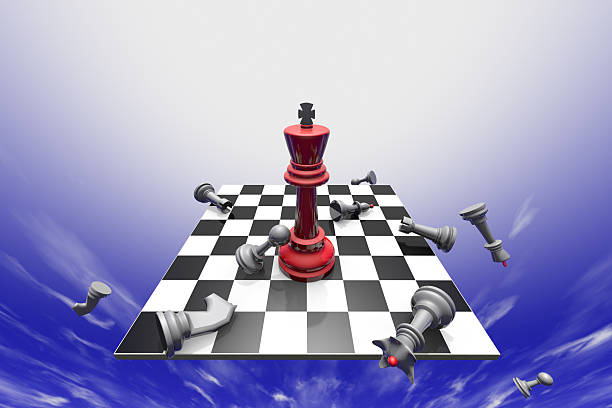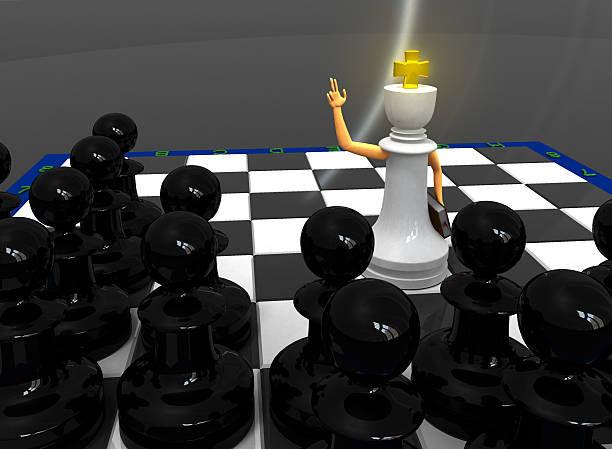Mutilated chessboard problem solution
Contents
Welcome to the fascinating world of problem-solving, where logic and creativity intertwine to unravel intricate puzzles. Today, we embark on a journey to explore the enigmatic realm of the Mutilated Chessboard Problem and unveil its elusive solution. So, grab your thinking caps and let’s delve into the depths of this captivating conundrum.

Introduction to the Mutilated Chessboard Problem
In the realm of mathematical puzzles, few challenges are as intriguing as the Mutilated Chessboard Problem. This age-old enigma has captivated the minds of mathematicians and puzzle enthusiasts for decades, offering a tantalizing blend of logic and ingenuity.
The puzzle originates from the classical concept of a chessboard, that familiar 8×8 grid where battles of strategy and cunning unfold. Imagine, if you will, this venerable battlefield stripped of two of its squares, one black and one white, from diagonally opposite corners. What remains is a curious puzzle that begs the question: can we cover the remaining squares with dominoes, each spanning two adjacent squares, without leaving any square untouched?
Understanding the Puzzle
Before we plunge into the depths of the problem, let’s take a moment to grasp its intricacies. Picture a chessboard, an 8×8 grid of alternating black and white squares, reminiscent of a timeless battle between opposing forces. Now, envision the removal of two squares, one black and one white, from opposite corners of the board, leaving behind a tantalizing challenge begging to be solved.
To better understand the puzzle, let’s consider a simplified example. Suppose we have a 4×4 chessboard, and we remove two opposite corners, leaving behind 14 squares. Is it possible to cover these 14 squares with 7 dominoes, each spanning two adjacent squares?
Statement of the Problem
The Mutilated Chessboard Problem presents us with a tantalizing conundrum: can we cover the remaining squares of the chessboard with dominoes, adhering to the constraints imposed by the removal of two corners? This seemingly innocuous question belies the complexity that lies beneath the surface, beckoning us to embark on a journey of exploration and discovery.
To illustrate the challenge further, let’s consider a larger chessboard. Suppose we have an 6×6 chessboard, and we remove two opposite corners. Can we cover the remaining 32 squares with 16 dominoes, each spanning two adjacent squares?

Analysis of the Problem
As we confront the Mutilated Chessboard Problem, we are confronted with a myriad of possibilities and pitfalls. Yet, armed with the tools of mathematical reasoning and logical deduction, we can unravel the secrets hidden within its labyrinthine depths.
At the heart of the problem lies the concept of parity, the inherent symmetry that governs the arrangement of squares on the chessboard. By probing the intricacies of parity and exploring the patterns woven into the fabric of the board, we can uncover the key insights that will guide us towards a solution.
To delve deeper into the problem, let’s consider the concept of parity. Each domino covers one black and one white square. By removing two opposite corners, we alter the parity of the remaining squares, creating a puzzle that defies simple intuition.
The Solution Strategy
Ah, the moment of truth has arrived! With a keen eye and a sharp mind, we embark on our quest to conquer the Mutilated Chessboard Problem. Our journey begins with a humble yet powerful strategy, rooted in the principles of mathematical reasoning and algorithmic thinking.
By partitioning the chessboard into smaller segments and leveraging the concept of parity, we can systematically navigate the twists and turns of the puzzle, inching ever closer to our goal. With each move, we edge towards the elusive solution, propelled by the inexorable tide of logic and reason.
To illustrate our strategy, let’s consider the example of a 4×4 chessboard. By dividing the board into two halves, each containing an equal number of black and white squares, we can cover the squares with 7 dominoes, thereby solving the puzzle.
Detailed Solution Walkthrough
Prepare to be dazzled as we unravel the intricacies of the Mutilated Chessboard Problem! With clarity and precision, we guide you through each step of the solution, illuminating the path with the brilliance of mathematical insight.
We start by dividing the chessboard into smaller segments, each containing an equal number of black and white squares. By carefully arranging the dominoes to cover the squares, we ensure that no square is left untouched, thus achieving victory over the puzzle.
To demonstrate the solution in action, let’s return to our example of the 4×4 chessboard. By placing dominoes strategically across the board, we cover each square with precision and finesse, leaving no room for error or ambiguity.

Real-World Applications
But wait, our journey does not end here! The lessons learned from the Mutilated Chessboard Problem extend far beyond the confines of the chessboard. In the realm of computer science and algorithm design, the principles elucidated by this age-old puzzle find practical application, shaping the landscape of modern technology.
From graph theory to algorithmic optimization, the insights gleaned from our exploration of the Mutilated Chessboard Problem continue to inspire innovation and discovery. As we gaze upon the horizon of possibility, we behold a world transformed by the power of mathematical reasoning and creative problem-solving.
Consider, for example, the application of similar principles in the design of routing algorithms for computer networks. By understanding the underlying patterns and symmetries inherent in network topology, engineers can develop more efficient and robust routing protocols, thereby improving the performance and reliability of communication systems.
Challenges and Extensions
As with any journey of exploration, our quest to solve the Mutilated Chessboard Problem is not without its challenges. From the complexities of time and space complexity to the myriad variations and extensions of the puzzle, the road ahead is fraught with obstacles and opportunities.
Yet, with perseverance and determination, we press onward, undeterred by the trials that lie ahead. For it is in the face of adversity that true ingenuity shines brightest, illuminating the path forward with the brilliance of human intellect.
Consider, for instance, the challenge of extending the puzzle to larger chessboards or imposing additional constraints on the placement of dominoes. By pushing the boundaries of the problem, mathematicians and puzzle enthusiasts alike can explore new frontiers of discovery and unlock the secrets hidden within its depths.

Conclusion
In conclusion, the Mutilated Chessboard Problem stands as a testament to the power of human ingenuity and the allure of mathematical discovery. Through careful analysis and strategic reasoning, we have unlocked the secrets hidden within its labyrinthine depths, emerging victorious in our quest for knowledge.
As we bid farewell to the hallowed halls of the chessboard, let us carry forth the lessons learned on our journey, ever mindful of the transformative power of logic and reason. For in the world of mathematics and problem-solving, the journey is just as important as the destination, and the true beauty lies in the pursuit of knowledge itself.





